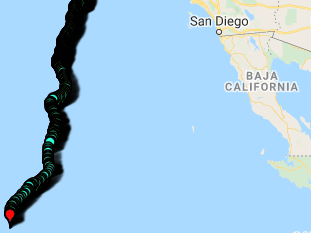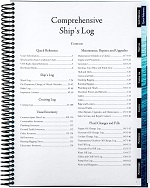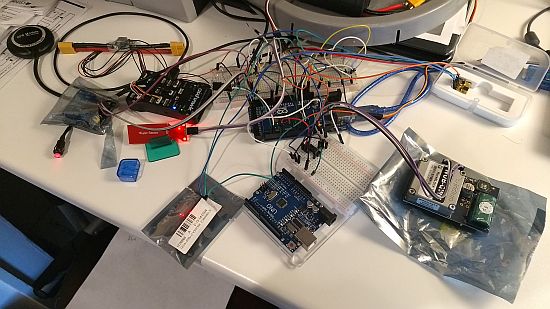Power System
Pow…Power what?
**For power system information on the LoCARB refresh using 18650 lithium cells, head here.
Thinking through this entire project, I am consistently worrying about how to size my power system as everything inter-relates. The number of electronics and sensors demand a certain amount of watts and the ability to provide enough power to them has forced me to learn about off-the-grid solar systems.
Sizing a solar system, is simple in theory; One calculates the total watt-hours used by the system, adds some % to account for solar system inefficiency, and figures out the # of panels needed to charge a battery which is sized for how long one wants to run the system continuously.
One needs to measure and calculate power consumption values under load, then the required solar hardware can then be purchased and installed.

To start, I grabbed a power meter off amazon to measure amperage and watts used for my various devices (ill update this page with final numbers):
- 2W – Pixhawk
- .5W – Arduino
- 12W – Motor ( I plan to keep the motor running at 12-13v at full throttle which draws around .9-1.2amps).
- 2W – Sensors powered on intermittently throughout the voyage.
- ? – Rudder Servo (haven’t tested yet)
- ? – Rockblock Naked MK2 sat comm modem (haven’t tested yet)
When added together, the above equals 16.5 Peak Wattage, with 14.5 watts nominal per hour. With that information I can then calculate what size battery I would need given how many days I want to run the system without recharging.
For this I take 14.5 Watts (per hour) x 24 (hours in a day) = 348 Watt-hours of power usage per day.

Now to size the battery
I then take 348 Watt-hours (per day) and multiply it by 2 (how many days I want the system to be able to operate at 100% functionality). This equals 696 Watts total to run for 2 days straight without charging. We need to multiply this number by 2 again as this will represent running the batteries at 50% depth of discharge on the battery (696 x 2 = 1392), and then divide the result by the voltage my battery will be supplying.
My goal is to run a 12v SLA battery, so 1392/12 = 116AH. This means that for my requirement of running the boat at 100% operating status for 2 days straight without recharging, I would need my 12v battery to be rated at 116AH. Given that I would expect to receive some sunlight for about 3-5 hours per day, which should recharge much of the battery every day, I dont expect power to run out at anytime during the voyage apart from encountering a storm lasting several days (at which point I would probably turn off the motor and allow the boat to drift some).
**This is the guide I used to size my battery capacity, which I found to be the most straightforward and easy to understand (https://solartown.com/learning/solar-panels/choosing-and-sizing-batteries-charge-controllers-and-inverters-for-your-off-grid-solar-energy-system/).
What type of battery to use?
There are multitudes of options when it comes to power storage. Since LoCARB seeks to minimize costs and maximize efficiency with weight acting as a ballast in the event of a capsize, I narrowed down the battery options from lithium to regular sealed lead acid.
According to: http://www.batteriesinaflash.com/deep-cycle-battery-faq, I can expect a standard automotive battery which is deep cycled every day to last somewhere between 2-13 months. given that the battery will be discharged to around 90-100% every day, I give the life span about 1 month less given the below values (2 months minimum life). This should be enough life to get to Hawaii.
Starting battery (Automotive battery etc) : 3-13 months
Marine Battery : 1-6 years
AGM Deep cycle: 4-7 years
Gel Cell Deep Cycle: 2-5 years
Flooded Lead Acid Deep Cycle Battery: 4-8 years
Which Solar Panel to use?
For estimating panel selection, I just need to find how much power a panel will produce given about 4 hours of full sunlight per day. If I choose a 100W solar panel, I would just multiply the hours by the Watt output to get the power produced by the panel. In this example I get 400 Watts produced by the panel per day. If I choose a 160W panel, I would get about 640 Watts per day. As long as these values are higher than the power that was used by the load, I should be in good shape.
Now, i’m all for saving money, but in an application where over-engineering may help, I would be willing to spend the extra $100 to get a higher producing panel to help provide a buffer for any sunlight shortage and provide a little wiggle room in case of any unforeseen circumstances. But how much wiggle room does using a 160W panel vs a 100W panel give us in terms of required sunlight hours?
How much sun do we need?
Once we have the total watt hours produced by the solar panel, we will want to see how long it takes for the panel to recharge the amount of power which was used since the last charge. Here we don’t need to work with standby or reserve power, so we just use the max wattage used per day (assuming the sun comes out) which is 348 Watts. In order to find how long it would take for a 160W solar panel to recharge 348 Watts of drain, we just divide the numbers which gives us 2.175 hours. We know that solar charging isn’t 100% efficient (more like 80%) so we divide 2.175 by 0.8, which gives us 2.718 hours of full sunlight to recharge 348 Watts back to the battery. If I was using a 100W panel, it would take 4.35 hours to fully recharge 348 Watts back to the battery.
What do we end up with?
So according to my math and risk tolerance preferences, I end up with one 160W solar panel using a MPPT charge controller (still determining amperage rating) to charge a 116AH SLA 12V car battery (Ill probably just get a 107-110AH, whatever is the longest and skinniest form factor). This should provide me with between 1.8 days of 100% operational functionality without a charge, and take roughly 3 hours of sunlight per day to keep fully charged. If I decide to run the system without the motor, this system could run for 5.5 days on a fully charged 110AH 12v battery without being charged.
Here are the calculations:
- 5W per hour consumption x 24 hours in a day = 120W per day power requirement
- 110AH battery * 12v = 1320 Watts (Wattage battery can provide)
- 1320 Watts /2 = 50% depth discharge = 660 Watts output (Find 50% depth of discharge for battery)
- 660W of battery / 120W consumption = 5.5 Days (how long the electronics without motor could last on a full battery charge)



